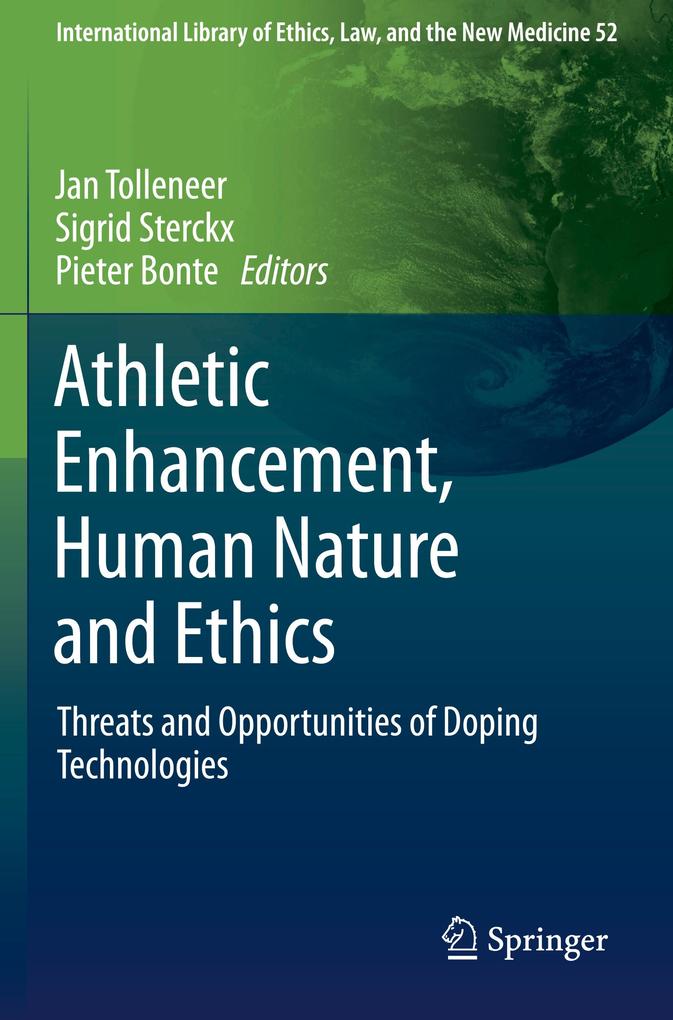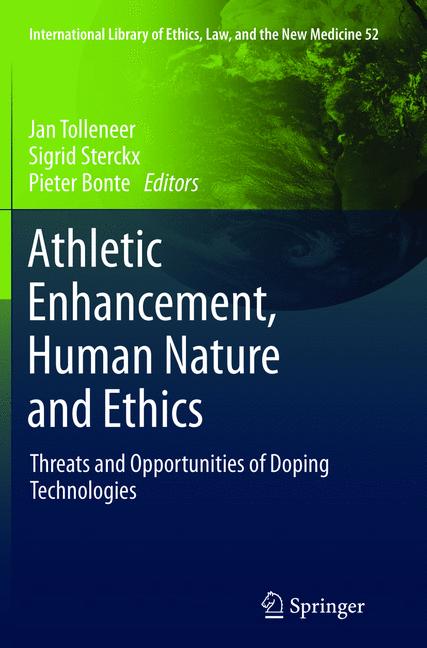
Inhaltsverzeichnis
Preface by Thomas H. Murray, President Emeritus of the Hastings Center and Chair of the Ethical Issues Review Panel for the World Anti-Doping Agency.
Introduction: Human nature as a promising concept to make sense of the spirit of sport. - Part I Conceptual and Theoretical Framework. - Jan Tolleneer and Paul Schotsmans, Self, other, play, display and humanity. Development of a five-level model for the analysis of ethical arguments in the athletic enhancement debate. - Christian Lenk, Is human enhancement unnatural and would this be an ethical problem? . - Pieter Bonte, Dignified doping: truly unthinkable? An existentialist critique of `talentocracy in sports. - Part II Transgressing the limits of human nature. - Eric Juengst, Subhuman, superhuman, and inhuman. Human nature and the enhanced athlete. - Trijsje Franssen, Prometheus on dope. A natural aim for improvement or a hubristic drive to mastery? . - Darian Meacham, Outliers, freaks, and cheats. Constituting normality in the age ofenhancement. - Part III The normative value of human nature. - Andreas De Block, Doping use as an artistic crime. On natural performances and authentic art. - Andrew Holowchak, Something from nothing or nothing from something? . Performance-enhancing drugs, risk, and the natures of contest and of humans. - Mike McNamee, Transhuman athletes and pathological perfectionism. Recognising limits in sports and human nature. - Part IV Socio-cultural and empirical approaches. - Marianne Raakilde Jespersen, Definitely not for women . An online community s reflections on women s use of performance enhancing drugs in recreational sports. - Denis Hauw, Toward a situated and dynamic understanding of doping behaviors. - Tara Magdalinski, Restoring or enhancing athletic bodies. Oscar Pistorius and the threat to pure performance. - Part V Practices and policies. - John Hoberman, Sports physicians, human nature, and the limits of medical enhancement. - Bengt Kayser and Barbara Broers, Anti-doping policies: choosing between imperfections. - Roger Brownsword, A simple regulatory principle for performance-enhancing technologies. Too good to be true?
Produktdetails
Entdecken Sie mehr
Pressestimmen
From the book reviews:
The book collects contributions of different authors with diverging points of views providing a rich analysis of one of the most controversial aspects of sports. For those who work in the field of clinical bioethics (i. e. , clinical ethics consultants or ethics committee members) and for those who are interested in implementing the knowledge of the relation between sport and doping, this book may serve as a very useful tool for in-depth analysis of these ethical issues. (Luciana Caenazzo, Theoretical Medicine and Bioethics, Vol. 35, 2014)
This edited book presents a thorough discussion of enhanced athletics in relation to different conceptions of human nature. The diversity of perspectives and approaches this book presents are meant to reach a wide range of readers. From philosophers to anthropologists to policy-makers, different sections will challenge and engage readers from a broad spectrum of scholarly backgrounds. This book is an excellent comprehensive look at the debate, and it is particularly successful in presenting a diversity of frameworks. (Heidi R. Pieroni, Doody s Book Reviews, July, 2013)Bewertungen
Es wurden noch keine Bewertungen abgegeben. Schreiben Sie die erste Bewertung zu "Athletic Enhancement, Human Nature and Ethics" und helfen Sie damit anderen bei der Kaufentscheidung.










